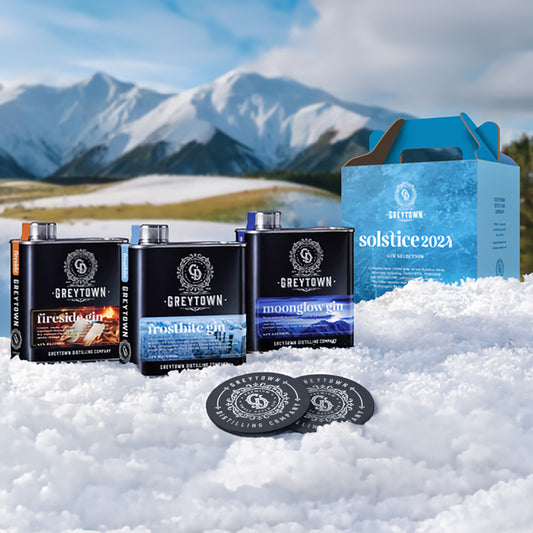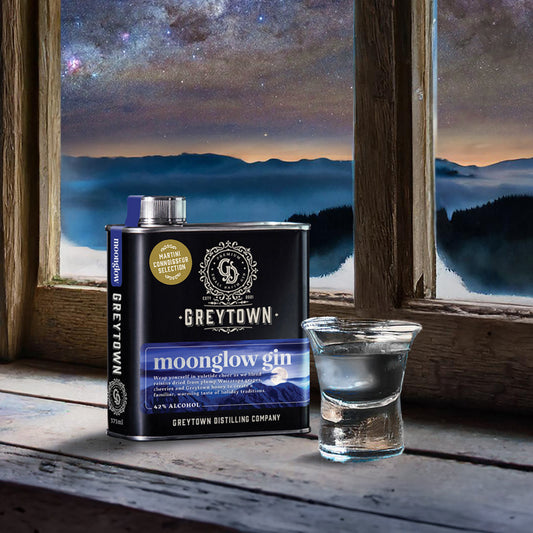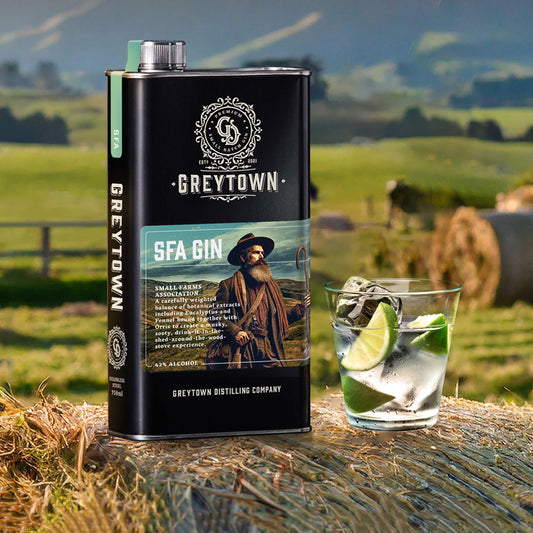SOLSTICE 24 SELECTION
Crisp morning frosts, vivid full moons and the crackle of a cosy fireplace on those chilly Greytown evenings. Solstice 24 gins celebrate the colder months that give us new excuses to gather good people around us for warm conversations.
-
750ml Frostbite Premium Gin
Full Details →Regular price $89.90Regular priceUnit price / per -
750ml Fireside Premium Gin
Full Details →Regular price $89.90Regular priceUnit price / per -
750ml Moonglow Martini Connoisseur Premium Gin
Full Details →Regular price $99.90Regular priceUnit price / per -
Solstice 2024 Selection Three Pack
Full Details →Regular price $149.90Regular priceUnit price / per -
375ml Frostbite Premium Gin
Full Details →Regular price $49.90Regular priceUnit price / per -
375ml Fireside Premium Gin
Full Details →Regular price $49.90Regular priceUnit price / per -
375ml Moonglow Martini Connoisseur Premium Gin
Full Details →Regular price $54.90Regular priceUnit price / per -
E-Gift Voucher
Full Details →Regular price From $50.00Regular priceUnit price / per
GROUNDBREAKER SELECTION
Our tribute to the pioneering men and women who beat staggering odds to establish Greytown, New Zealand’s first planned inland European settlement.
-
750ml SFA Premium Gin
Full Details →Regular price $89.90Regular priceUnit price / per -
750ml Settler Premium Gin
Full Details →Regular price $89.90Regular priceUnit price / per -
750ml Tweed Martini Connoisseur Premium Gin
Full Details →Regular price $99.90Regular priceUnit price / per -
Groundbreaker Selection Three Pack
Full Details →Regular price $149.90Regular priceUnit price / per -
375ml SFA Premium Gin
Full Details →Regular price $49.90Regular priceUnit price / per -
375ml Settler Premium Gin
Full Details →Regular price $49.90Regular priceUnit price / per -
375ml Tweed Martini Connoisseur Premium Gin
Full Details →Regular price $54.90Regular priceUnit price / per -
E-Gift Voucher
Full Details →Regular price From $50.00Regular priceUnit price / per
TRAILBLAZER SELECTION
A tribute to the adventurers who came to our country from across the sea on ships, then over the Remutaka range on trains or stagecoaches to blaze the trails that bring modern pioneers to our village today.
-
E-Gift Voucher
Full Details →Regular price From $50.00Regular priceUnit price / per















